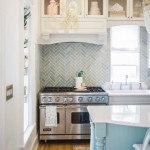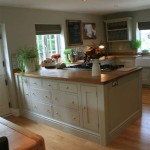Painting Over Varnished Kitchen Cabinets: A Comprehensive Guide
Painting varnished kitchen cabinets offers a cost-effective alternative to replacing them, allowing homeowners to update the aesthetic of their kitchen without undertaking a major renovation. However, achieving a professional and long-lasting finish requires careful preparation, the right materials, and meticulous application. This article provides a detailed guide on how to successfully paint varnished kitchen cabinets, addressing the common challenges and outlining the necessary steps for a durable and visually appealing result.
Varnish, typically an oil-based or water-based polyurethane, creates a durable and glossy finish designed to protect the underlying wood. Its inherent smoothness and resistance to adhesion, however, present the primary obstacle when attempting to paint over it. Paint, particularly water-based latex paints, struggles to properly bond to varnished surfaces, leading to peeling, chipping, and an overall compromised finish. Therefore, proper preparation is paramount to ensure the successful adhesion of the new paint layer.
Key Point 1: The Importance of Surface Preparation
The foundation for a successful paint job lies in the meticulous preparation of the existing varnished surface. Neglecting this step significantly increases the risk of paint failure, resulting in wasted time, effort, and materials. Surface preparation involves cleaning, deglossing, and priming the cabinets, each playing a crucial role in paint adhesion.
The first step in preparing the cabinets is thorough cleaning. Over time, kitchen cabinets accumulate grease, grime, and food splatters, all of which can interfere with paint adhesion. Using a strong degreasing cleaner, such as trisodium phosphate (TSP) or a TSP substitute, scrub the cabinets thoroughly. Follow the manufacturer's instructions carefully, wearing appropriate protective gear such as gloves and eye protection. Rinse the cabinets thoroughly with clean water to remove all traces of the cleaner and allow them to dry completely.
Deglossing is the process of removing the glossy sheen of the varnish, creating a more textured surface for the primer and paint to grip onto. This can be achieved through several methods, including sanding or using a liquid deglosser. Sanding is the most common and reliable method, requiring the use of medium-grit sandpaper (around 120-180 grit) to lightly scuff the surface. Avoid sanding too aggressively, as the goal is not to remove the varnish entirely but rather to create a slightly roughened surface. After sanding, thoroughly remove all sanding dust with a tack cloth or a damp cloth.
Liquid deglossers, also known as liquid sandpaper, offer a less labor-intensive alternative to sanding. These products contain chemicals that etch the surface of the varnish, creating a similar texture for paint adhesion. When using a liquid deglosser, follow the manufacturer's instructions carefully, ensuring proper ventilation and wearing appropriate protective gear. Apply the deglosser with a clean cloth, allow it to sit for the recommended time, and then wipe it off with a clean, damp cloth.
Priming is the final and arguably most critical step in surface preparation. A high-quality primer creates a uniform, adhesive surface for the paint to bond to. Choose a primer specifically designed for use on glossy surfaces, such as an adhesion primer or a bonding primer. These primers contain special additives that enhance their ability to adhere to slick surfaces like varnish. Apply the primer in thin, even coats using a brush, roller, or sprayer, following the manufacturer's instructions. Allow the primer to dry completely before proceeding to the painting stage.
Consider tinted primers. Tinting the primer to a similar color as the final paint color can improve coverage and reduce the number of paint coats required, saving time and material.
Key Point 2: Selecting the Right Paint and Tools
The choice of paint and tools significantly impacts the final outcome of the cabinet painting project. Using the wrong type of paint or subpar tools can lead to an uneven finish, poor adhesion, and ultimately, a less durable result.
For painting kitchen cabinets, alkyd (oil-based) or acrylic latex paints are generally recommended. Alkyd paints offer excellent durability and a smooth, hard finish, making them well-suited for high-traffic areas like kitchens. However, they require more time to dry, emit stronger odors, and require mineral spirits for cleanup. Acrylic latex paints, on the other hand, are water-based, making them easier to clean up, lower in odor, and faster drying. Modern acrylic latex paints offer excellent durability and are a suitable choice for most kitchen cabinet painting projects. Consider acrylic enamel paints, which provide an particularly hard and durable finish.
When selecting the paint finish, consider the desired aesthetic and the level of maintenance required. Semi-gloss and gloss finishes are more durable and easier to clean than matte or eggshell finishes, making them ideal for kitchen cabinets that are frequently exposed to spills and splatters. However, higher gloss finishes tend to highlight imperfections, so proper surface preparation is even more critical.
The choice of application tools depends on personal preference and the desired finish. Brushes are suitable for painting intricate details and corners, while rollers are more efficient for covering larger, flat surfaces. Using high-quality brushes with synthetic bristles ensures a smooth and even application. Foam rollers or microfiber rollers are preferred for minimizing brush strokes and roller textures. Paint sprayers, such as airless or HVLP (high-volume, low-pressure) sprayers, offer the most professional-looking finish by atomizing the paint into a fine mist, resulting in a smooth and even coating. However, using a paint sprayer requires practice and proper ventilation.
Invest in painter's tape to protect surrounding surfaces, such as countertops, walls, and appliances. Use drop cloths to cover the floor and prevent paint splatters. A good-quality paint tray with liners makes cleanup easier and prevents paint from drying out.
Key Point 3: Proper Painting Techniques and Curing
Even with proper preparation and the right materials, incorrect painting techniques can lead to an unsatisfactory result. Applying paint too thickly, neglecting proper drying times, or rushing the process can all compromise the final finish. Adhering to best practices ensures a smooth, durable, and aesthetically pleasing result.
Before painting, stir the paint thoroughly to ensure even color distribution. Apply the paint in thin, even coats, avoiding drips and runs. Overlapping strokes slightly helps to blend the paint seamlessly. Allow each coat to dry completely before applying the next, following the manufacturer's recommended drying times. Applying paint too thickly or before the previous coat is dry can lead to sagging, blistering, and poor adhesion.
When painting with a brush, use long, even strokes, following the grain of the wood. Avoid applying too much pressure, which can cause brush marks. When painting with a roller, use a light touch and roll in a consistent direction. Overlap each pass slightly to ensure complete coverage. If using a paint sprayer, maintain a consistent distance from the cabinet surface and move the sprayer in smooth, even strokes. Overlapping each pass by about 50% helps to create a uniform finish.
After applying the final coat of paint, allow the cabinets to cure completely before reassembling them and putting them back into use. Curing is the process where the paint hardens and reaches its full durability. The curing time varies depending on the type of paint and the environmental conditions, but typically takes several days to a few weeks. Refer to the paint manufacturer's instructions for specific curing times. Avoid exposing the freshly painted cabinets to excessive moisture or heat during the curing process.
Lightly sanding between coats with fine-grit sandpaper (around 220-320 grit) can help to remove any imperfections and create a smoother finish. Be sure to remove all sanding dust before applying the next coat of paint.
Reinstalling the hardware carefully after the paint has fully cured is essential to avoid damaging the new finish. Consider using new hardware to update the look of the cabinets further. Clean the painted cabinets regularly with a mild soap and water solution to maintain their appearance and prolong their lifespan.

How To Paint Kitchen Cabinets Without Sanding Sustain My Craft Habit

Avoid These Mistakes How To Paint Cabinets That Are Already Painted Grace In My Space

How To Paint Laminate Kitchen Cabinets Perfect Finish Tips

How To Paint Kitchen Cabinets Without Sanding Or Priming

How To Paint Pressed Wood Kitchen Cabinets Choice Cabinet

How To Paint Kitchen Cabinets A Step By Guide Confessions Of Serial Do It Yourselfer

Refinish Kitchen Cabinets With Kilz Restoration Primer

How To Paint Kitchen Cabinets Without Sanding Sustain My Craft Habit

How To Paint Previously Varnished Kitchen Cabinets Ppc

How To Paint Veneer Cabinets For A Long Lasting Finish Anika S Diy Life
Related Posts








